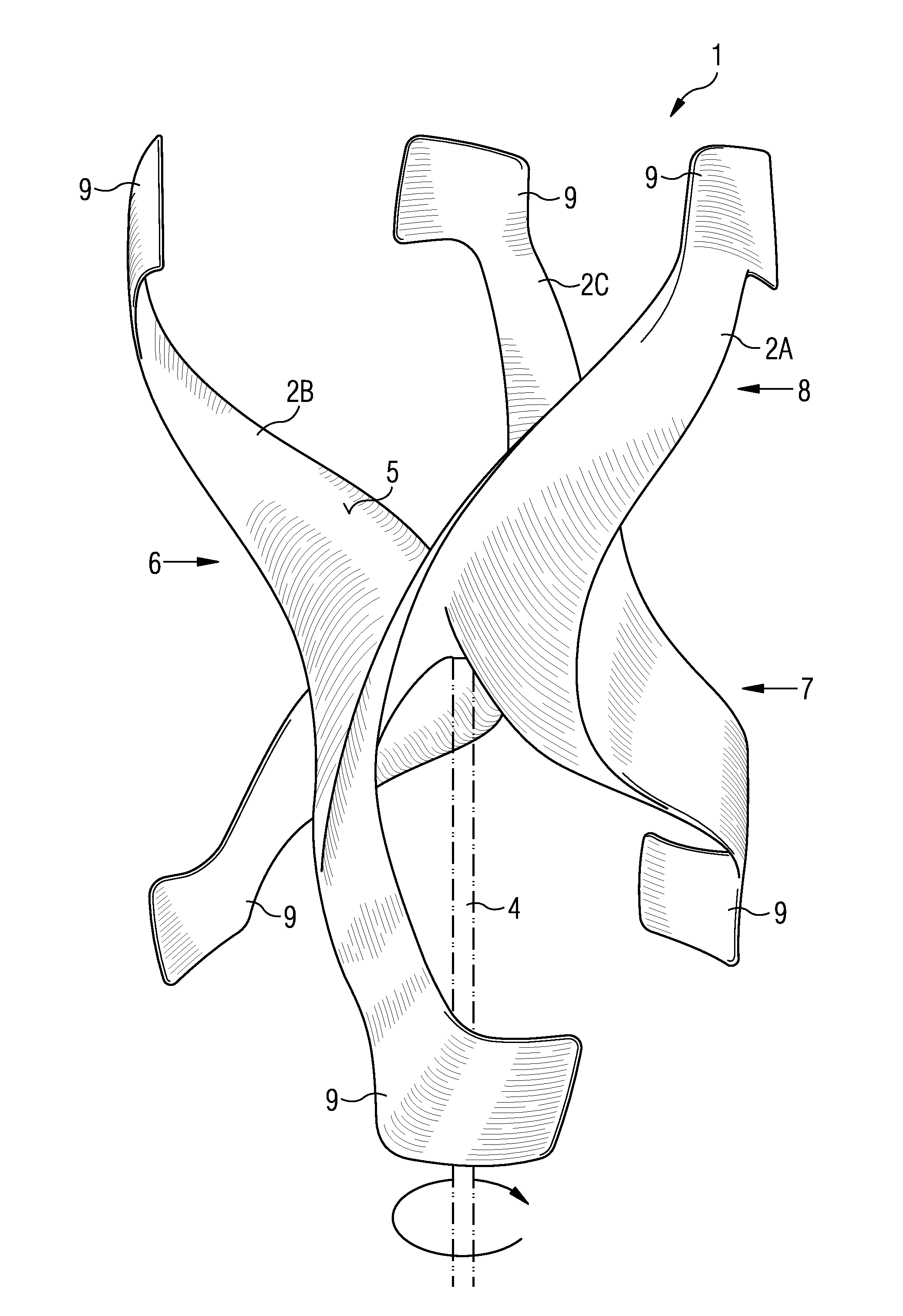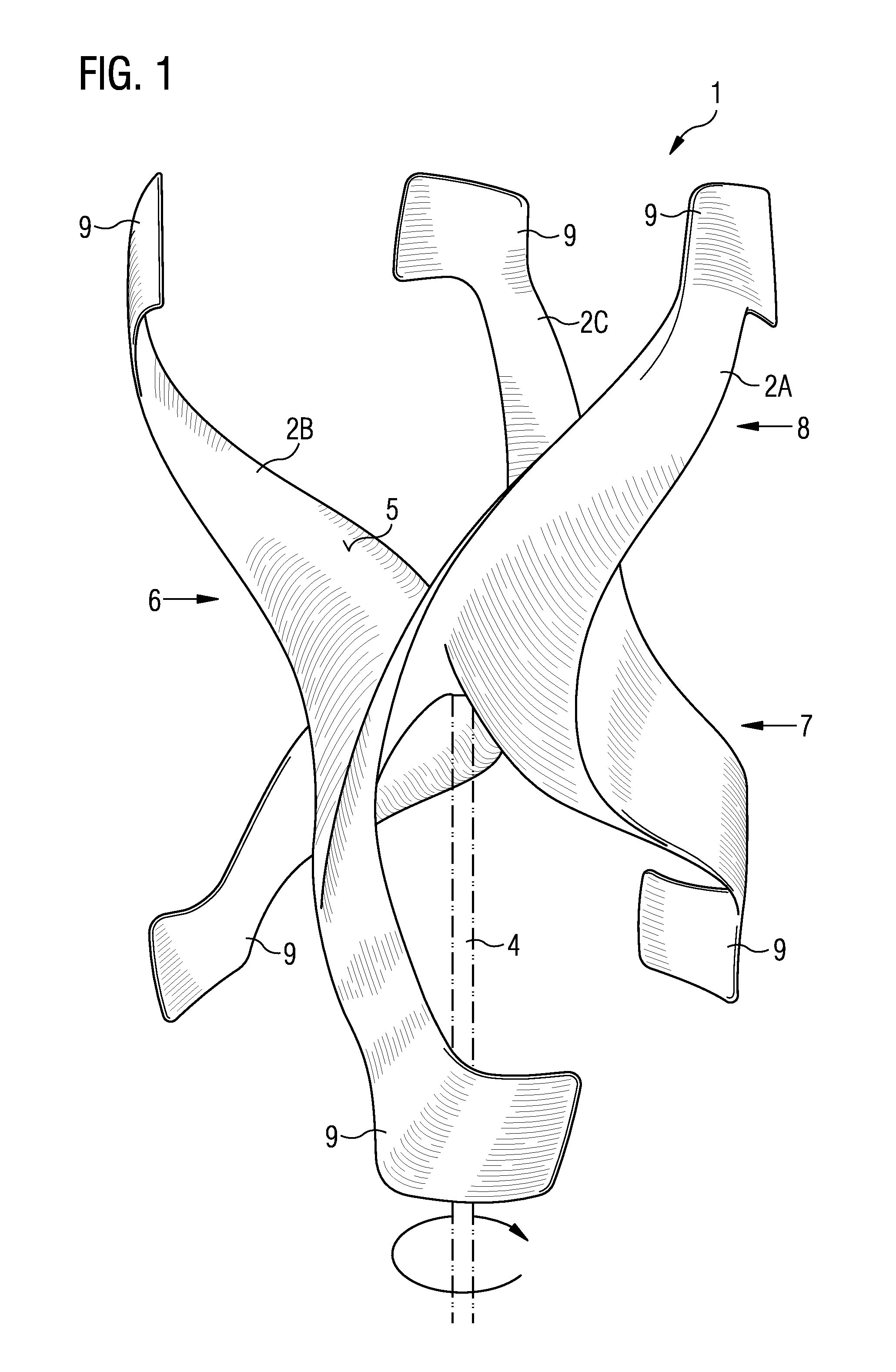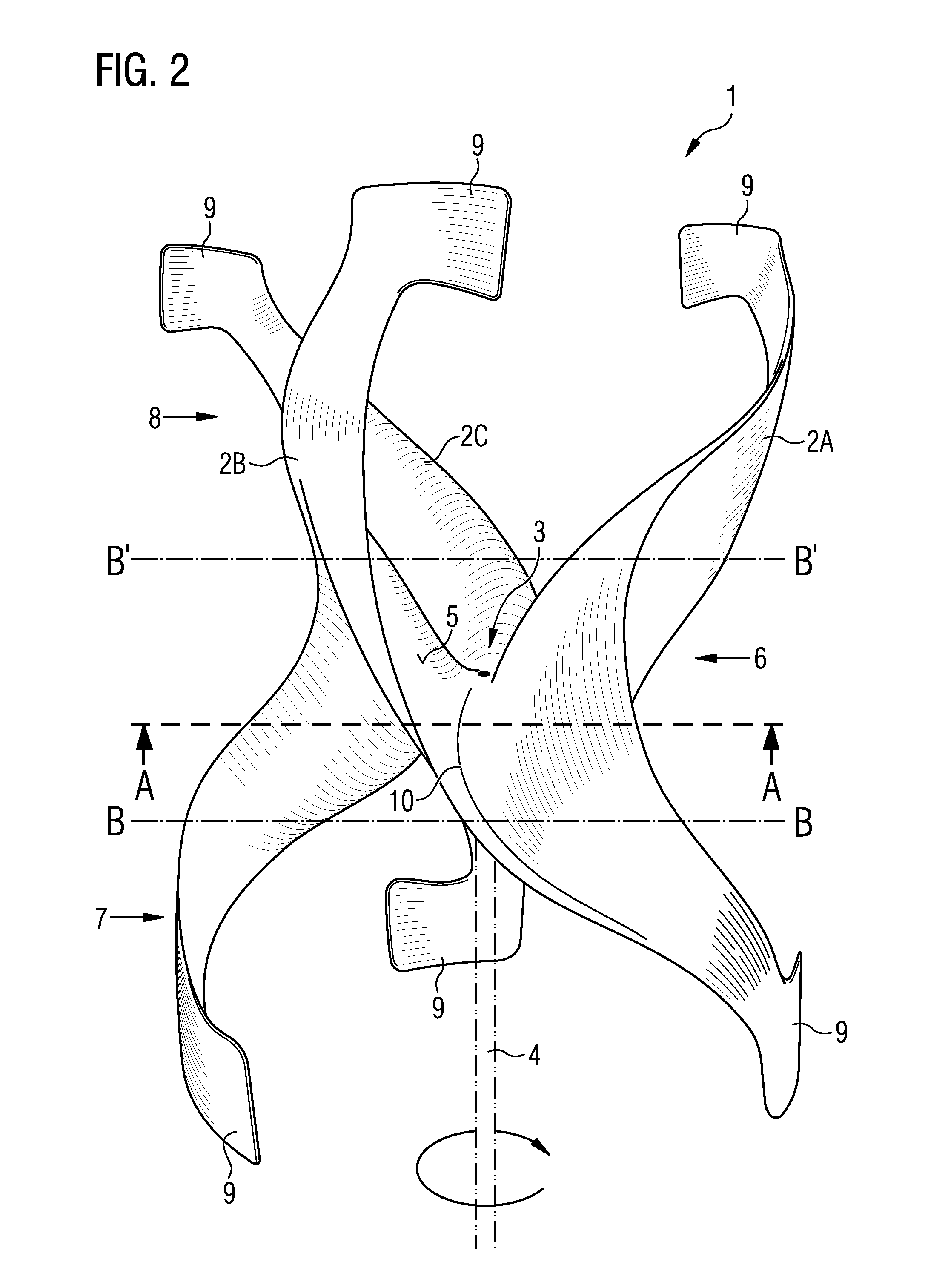Rotor for Vertical Wind Power Station
a technology for wind power stations and rotors, applied in the direction of propellers, propulsive elements, water-acting propulsive elements, etc., can solve problems such as performance losses, and achieve the effects of enhancing the lift effect of individual rotor elements, favorable surface patterning, and additional utilization of wind for
- Summary
- Abstract
- Description
- Claims
- Application Information
AI Technical Summary
Benefits of technology
Problems solved by technology
Method used
Image
Examples
Embodiment Construction
[0045]In the figures, 1 designates an example of a rotor for a vertical wind power station comprising triple-surface rotor elements 2A, 2B, 2C that are arranged around a hub region 3. The rotor elements 2A, 2B, 2C have a helical axis which, in the exemplary case, is parallel to the axis of rotation 4 of the rotor 1 and around which the rotor elements 2A, 2B, 2C are twisted in a spiraling manner. The rotor elements 2A, 2B, 2C have concave and convex surface regions smoothly merging into each other and having different radii of curvature along the helical axis.
[0046]The rotor 1 is frictionally coupled to the axis of rotation 4. As the rotor 1 is a vertical rotor for a vertical wind power station, the axis of rotation 4 is arranged in the direction of gravity during operation.
[0047]At the lower end (not shown in the figures) of the axis of rotation 4, a gearbox is provided which is connected to a generator that is equally caused to rotate by the rotation of the rotor 1 and in a manner ...
PUM
 Login to View More
Login to View More Abstract
Description
Claims
Application Information
 Login to View More
Login to View More - R&D
- Intellectual Property
- Life Sciences
- Materials
- Tech Scout
- Unparalleled Data Quality
- Higher Quality Content
- 60% Fewer Hallucinations
Browse by: Latest US Patents, China's latest patents, Technical Efficacy Thesaurus, Application Domain, Technology Topic, Popular Technical Reports.
© 2025 PatSnap. All rights reserved.Legal|Privacy policy|Modern Slavery Act Transparency Statement|Sitemap|About US| Contact US: help@patsnap.com



